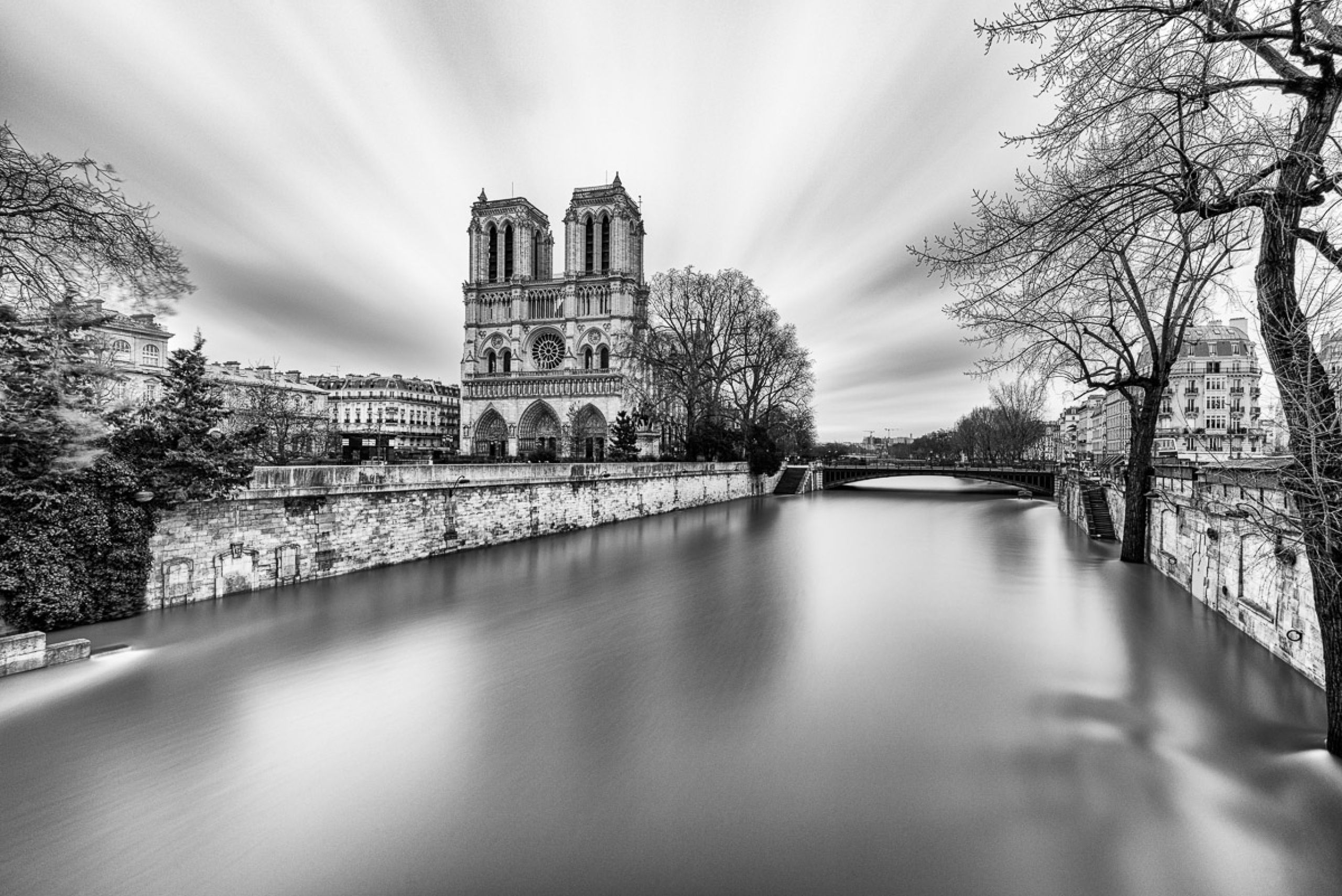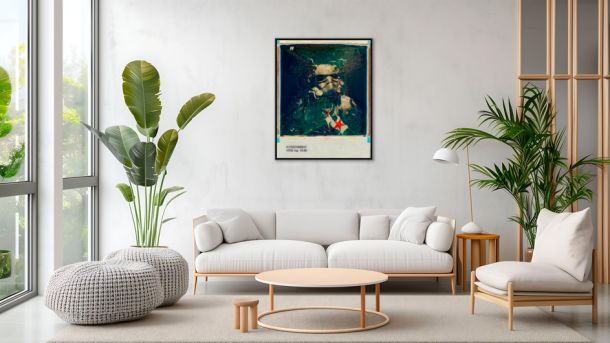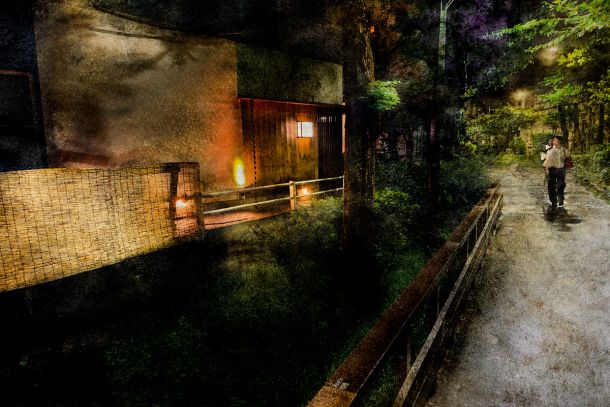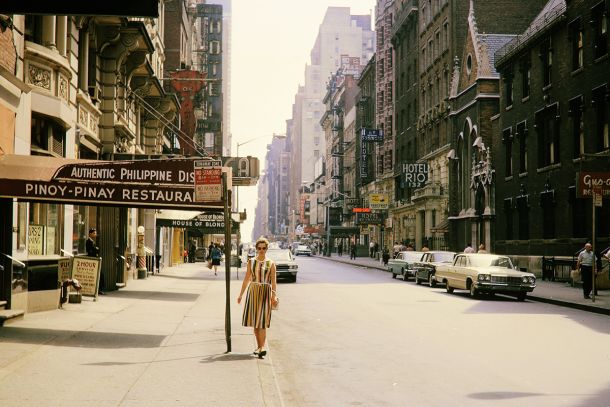The Timeless Soul of Black and White: A Story of Rebirth

Notre Dame de Paris and the flooding Seine – Photo: © Sebastien Desnoulez
Pure emotion: when black and white reveals the soul
Wondering why black and white photography still fascinates today, even though color has reigned supreme for decades? This artistic discipline has weathered a turbulent history: born with photography itself, eclipsed by the rise of color, then resurrected by artists seeking pure essence. Discover how black and white became a deliberate artistic language, able to distill the essential, reinforce compositional structure, and ignite the viewer’s imagination.
Summary
- The Origins: When Black and White Was the Only Reality
- The Golden Age: Establishing an Artistic Language (1900–1960)
- The Decline: Eclipse by the Color Revolution
- The Renaissance: A Conscious and Powerful Artistic Choice
- Investing in Timelessness: Contemporary Selection Criteria
The Origins: When Black and White Was the Only Reality
The Technical Childhood of Photography (1839–1900)
With the invention of the daguerreotype by Louis Daguerre in 1839, photography was born black and white out of technical necessity. These first images, though monochromatic, already showed a unique ability to capture the essence of reality by removing chromatic distractions.
The pictorialist movement of the 1890s turned this technical constraint into an aesthetic choice. Photographers like Edward Steichen and Alfred Stieglitz recognized black and white’s expressive power, rivaling painting through its poetic visual qualities.
The Golden Age: Establishing an Artistic Language (1900–1960)
Masters of Contrast and Composition
This era gave rise to black and white giants: Ansel Adams revolutionized landscape with his “zone system,” Man Ray explored surrealist photography, and Henri Cartier-Bresson defined the “decisive moment” in street photography.
These artists proved black and white doesn’t copy reality—it transfigures it. Deprived of color, the image focuses attention on the essential:
- Light becomes the main subject, sculpting volume
- Leading lines structure space with geometric purity
- Contrasts create visual drama impossible in color
- Textures reveal their tactile sensuality
The Decline: Eclipse by the Color Revolution
The Rise of Kodachrome and Democratization of Color (1960–1990)
With the mass arrival of color in the 1960s, black and white was temporarily relegated to obsolete technique. Kodachrome and later mainstream color processes seduced with apparent realism and ease of use.
During this period, black and white survived in a few niches:
- Press photography (for economic reasons)
- Confidential artistic photography
- Social documentation and activist reportage
Ironically, this eclipse paved the way for a revival, freeing it from technical obligation and affirming it as a purely artistic choice.
The Renaissance: A Conscious and Powerful Artistic Choice
Back to Creative Roots (1990–Today)
Since the 1990s, black and white has seen a spectacular resurgence. Contemporary photographers choose it deliberately for its unique expressive qualities:
Getting to the Essence
Black and white eliminates chromatic distractions to reveal the image’s core. Sebastião Salgado captures the human condition, Joel Meyerowitz explores urban intimacy, Michael Kenna elevates minimalist landscapes.
Strengthening Compositional Structure
Without color, the eye focuses on:
- Visual mass balance
- Rhythm of leading lines
- Hierarchy of planes
- Musicality of forms
Stimulating the Imagination
Black and white actively engages the viewer’s imagination. Depriving the eye of color, it forces the mind to mentally complete the image, creating a unique bond between artist and audience.
New Generations of Artists
Photographers like Sally Mann, Hiroshi Sugimoto, and Antoine d’Agata show that contemporary black and white doesn’t imitate its predecessors: it invents its own visual language for today’s challenges.
Investing in Timelessness: Contemporary Selection Criteria
Artistic Vision Over Technique
Contrary to popular belief, the value of a black and white photo isn’t about technique but the artist’s vision. Key criteria include:
- Originality of vision: ability to reveal the unseen
- Coherence of career: building a distinct visual universe
- Formal innovation: pushing the black and white language forward
- Institutional recognition: validation by galleries, museums, and critics
Print Types and Their Heritage Value
| Print Type | Characteristics | Investment Value |
|---|---|---|
| Vintage Print | Contemporaneous with capture, artist-supervised | Very High: Historical authenticity |
| Period Print | Made during artist’s lifetime, analog technique | High: Close to original creation |
| Authorized Modern Print | Posthumous but validated by estate/foundation | Medium to High depending on provenance |
| Contemporary Fine Art | Pigment print, museum-grade, limited edition | High for recognized emerging artists |
Today’s Market: Trends and Opportunities
The current market favors:
- Coherent series exploring modern themes
- Technical experimentation respecting heritage
- Contemporary documentation with singular visions
- Visual storytelling innovation in black and white
Specialized fairs like Paris Photo attest to the sustained collector interest in this timeless aesthetic that transcends trends.
The Eternal Modernity of Black and White
Black and white photography has earned its timeless status by turning a technical constraint into expressive language. Its turbulent journey—from technical default to colored eclipse to creative rebirth—shows its adaptability and power of renewal.
Today, choosing black and white affirms an artistic vision that favors essence over appearance, structure over anecdote, emotion over instant charm. For savvy collectors, investing in contemporary black and white is a bet on the permanence of fundamental aesthetic values.
Explore our curated selection of contemporary black and white artworks on Une-image-pour-rever.fr, where every print tells a unique visual story, bearing witness to the creative vitality of this eternally modern aesthetic.



